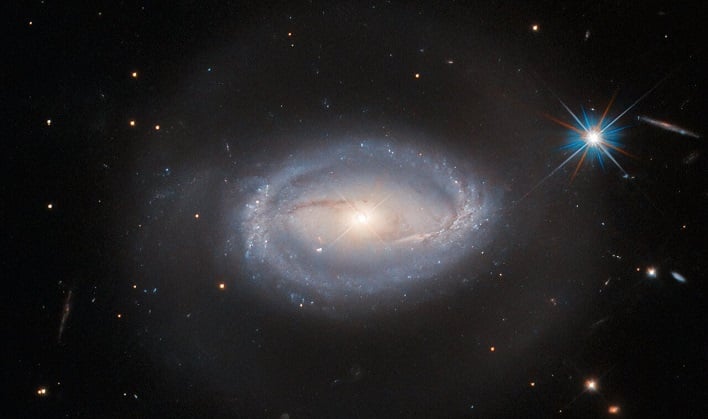Hubble Spots A Strange Celestial Object That Has NASA Stumped

Scientists like to be able to narrow down what something is so that it can be neatly organized into a specific category. However, there are times when something defies any one classification. This is the case with celestial object Z 229-15 which falls under three different definitions that have significant overlap.
Z 229-15 sometimes appears as an active galactic nucleus (AGN). At other times, it appears as a quasar. Then there are times when it resembles a Seyfert galaxy. This begs the question, "Which is it?" The answer is that it is all three wrapped into one.
An AGN is described as a small region at the core of a galaxy that is much brighter than the galaxy's stars. An AGN is so bright because of the presence of a supermassive black hole at the heart of the galaxy. The material that is being sucked into the black hole is drawn into a swirling disc. The swirling material gets so hot that it releases a huge amount of energy across the electromagnetic spectrum, making an AGN glow brightly.
A quasar is a particular type of AGN. They tend to be both very luminous and reside at vast distances from Earth. AGNs tend to be so bright that the rest of the galaxy is hidden in its luminosity. However, Seyfert galaxies are active galaxies that host AGNs (quasars), while the rest of the galaxy is still detectable. ESA sums it up, stating, "So Z 229-15 is a Seyfert galaxy that contains a quasar, and that, by definition, hosts an AGN."
Z 229-15 reminds us that not everything can be easily defined as being one thing. Some things simply demand a broader means of classification.

